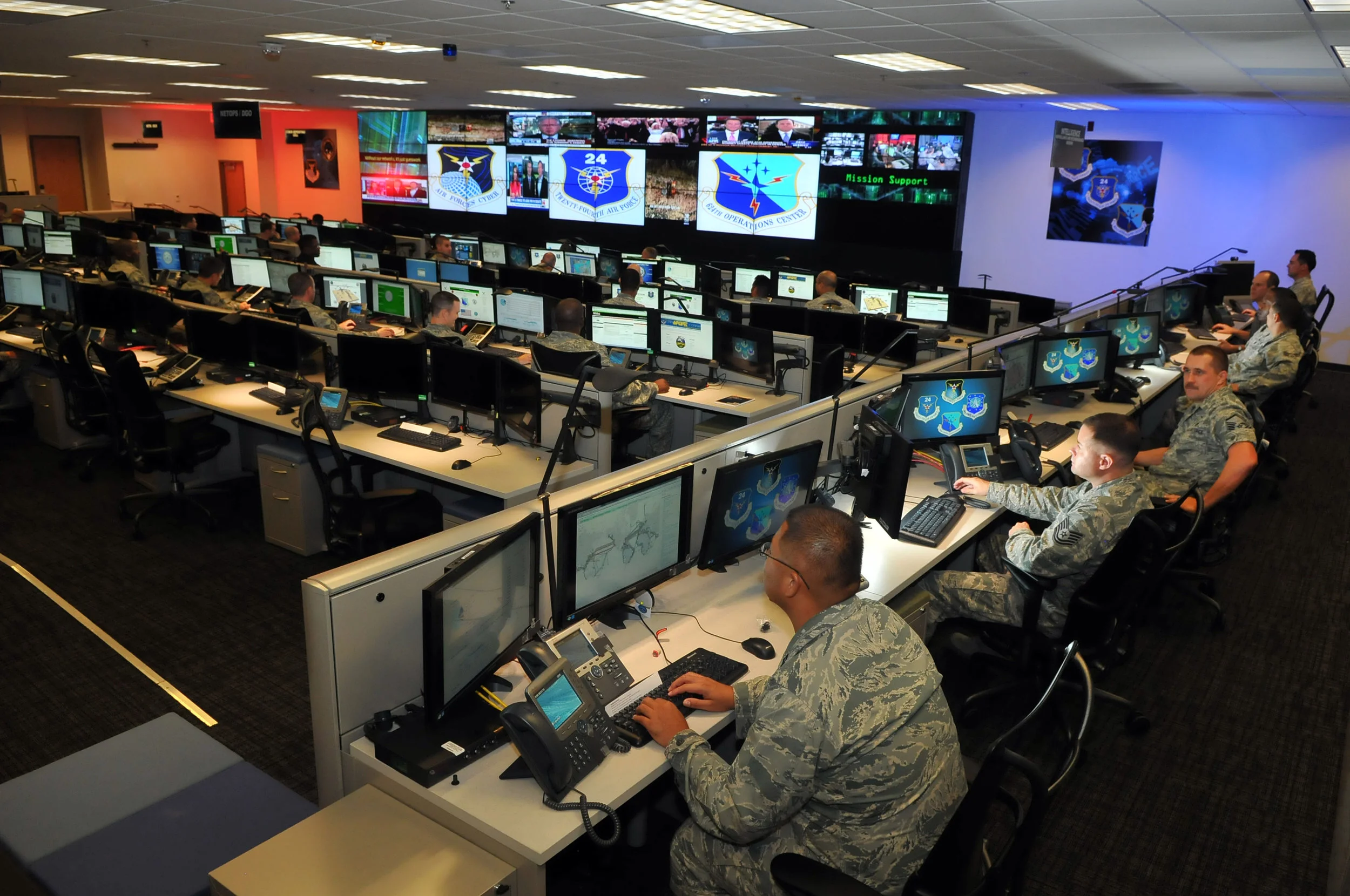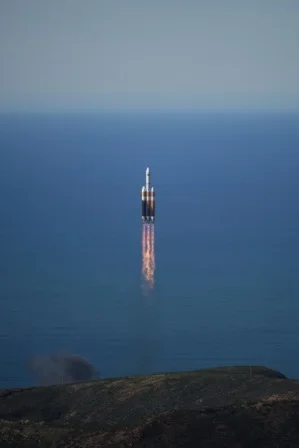The National Youth Cyber Education Program
WHAT IS CYBERPATRIOT?
CyberPatriot the National Youth Cyber Education Program created by the Air Force Association (AFA) to inspire K-12 students toward careers in cybersecurity or other science, technology, engineering, and mathematics (STEM) disciplines critical to our nation's future. The CyberPatriot Programs are:
THE NATIONAL YOUTH CYBER DEFENSE COMPETITION
At the center of CyberPatriot is the National Youth Cyber Defense Competition. The competition puts teams of high school and middle school students in the position of newly hired IT professionals tasked with managing the network of a small company. In the rounds of competition, teams are given a set of virtual images that represent operating systems and are tasked with finding cybersecurity vulnerabilities within the images and hardening the system while maintaining critical services. Teams compete for the top placement within their state and region, and the top teams in the nation earn all-expenses paid trips to Baltimore, MD for the National Finals Competition where they can earn national recognition and scholarship money.
AFA CYBERCAMPS
AFA CyberCamps emphasize fun, hands-on learning of cybersecurity principles that are relevant and applicable to everyday life. At CyberCamp, students learn the importance of cyber safety and how to protect their personal devices and information from outside threats. Standard AFA CyberCamps teach beginner students the basics while Advanced AFA CyberCamps incorporates more complex concepts geared towards students who have previous participated in a CyberCamp or participated on a CyberPatriot team.
ELEMENTARY SCHOOL CYBER EDUCATION INITIATIVE
The CyberPatriot Elementary School Cyber Education Initiative (ESCEI) is a set of three fun, interactive learning modules aimed at increasing grade K-6 students’ awareness of online safety and cybersecurity principles. Security Showdown 2 is geared at K-2 students and teaches students about Personal Information. JeffOS is for grades 3-6 and teaches about phishing, malware and firewalls. Packet Protector is also geared at grades 3-6 and teaches about malware, defenses and passwords.
Photo courtesy of US Air Force Cyber Command
CYBEREDUCATION LITERATURE SERIES
The Cyber Education Literature series was launched in December 2017 with the publishing of its first book, Sarah the Cyber Hero. The book is a pre-K reader for younger children that pioneers the topic of cybersecurity to a early elementary youth and is available to purchase online.
CYBERGENERATIONS
CyberPatriot's newest program, CyberGenerations, the Senior Citizen's Guide to Cyber Safety will be available nationwide in late 2018. The program aims to teach older individuals about password hygiene, malware and ransomware, marketing and fraud scam, and social media awareness.
LEARN MORE ABOUT THE AFA’S CYBERPATRIOT PROGRAM
The National High School Space Challenge
Earn an all-expense-paid trip* to the StellarXplorers Finals!
StellarXplorers inspires and attracts high school students to pursue studies and careers in science, technology, engineering, and mathematics (STEM) through a challenging, space system design competition involving all aspects of system development and operation with a spacecraft/payload focus.
Who can participate?
Teams can come from any high school (including home schools), JROTC, CAP, School Clubs, Boy/Girl Scouts, Boys & Girls Clubs, or any organized youth organization. Teams consist of an adult Team Director (usually a teacher) and two to six students. Team Mentors with space experience are available in-person or online. Participation is free until after teams have had the opportunity to compete for the first qualifying round. A nominal $200 registration fee for the team is payable in December, with waivers available to Title I schools upon request.
How does it work?
The Program supplies a self-contained academic/education component accessed online as a curriculum supplement, as well as specific training in the use of system simulation software, Systems Tool Kit (STK). The competition leading up to the finals will be accomplished from the team’s home location on any Windowsbased personal computer. Teams will be asked for their solutions to a typical space design problem, such as orbit determination, satellite component selection, and launch vehicle planning, as outlined in a scenario describing the system’s mission and constraints. Practice Rounds will precede three Qualification/Prestige Rounds in November, December, and February that will determine teams advancing to Semi-Finals in March to continue the full learning experience. The top teams from the Semi-Finals will receive an all-expense-paid trip the Finals in Colorado in early April.
For Students
Photo courtesy of US Air Force Space Command
This is an exciting hands-on learning experience that develops commercially valuable skills and increases appreciation for the critical role of space in our daily lives. The competition attracts all types of students with diverse backgrounds who will establish their own experiential base off accomplishment, all while building teamwork and leadership skills. Most of all … it is FUN!!!
For Teachers & Mentors
The program provides a relevant and stimulating addition to your classroom with hands-on, real-world applications of science and technology that is widely embedded into your students’ lives. Mentors have the opportunity to share their knowledge with an appreciative young audience in an endeavor that they chose as their life’s work, while inspiring the next generation of their own replacements. For Sponsors Offers the chance to “grow your own” future workforce! You’ll have access to a pipeline of talented individuals, interested your business, most U.S. citizens eligible for advanced clearances and uniquely positioned to be your interns and future employees. At the same time, you’ll boost US competitiveness and STEM education, while enhancing your visibility with customers and peers.
REGISTRATION AND SPONSOR Information
Register at: www.StellarXplorers.org / StellarXplorers@afa.org / (703)-247-5800 x 4899 (Registration is open 1 May- 1 October each year) Sponsors Contact: Stephen Gourley, stephen.k.gourley@gmail.com / (720) 253-3474
LEARN MORE ABOUT THE AFA’S STELLARXPLORER PROGRAM
New Air Force Science & Technology Strategy
Secretary of the Air Force Heather Wilson unveiled a new and ambitious Science and Technology Strategy designed to better identify, develop and deploy breakthrough technologies, April 17, 2019.
The 32-page report is a blueprint for the next decade and beyond. The strategy includes an array of changes allowing the Air Force to maximize – and expand – its technological advantage in the new era of peer-to-peer threats.
“This strategy isn’t just a list of technologies. Our approach will be to predict where adversaries cannot easily go and make sure the Air Force gets there first,” Wilson said.
The plan for executing this strategy is divided into three objectives to make the vision a reality:
Develop and deliver transformational capabilities
The Air Force will focus on developing and delivering transformational, operational capabilities by restructuring its science and technology portfolio.
“The Air Force will prioritize five strategic capabilities while maintaining the ability to dominate time, space, and complexity across all operating domains,” she said.
The five capabilities are:
• Global persistent awareness which may include advances in “multimodal sensing” and developing new laser and multistatic radars;
• Resilient information sharing, which may include developing mesh networks and “agile systems with real-time spectrum awareness”;
• Rapid, effective decision-making which may include advances in artificial intelligence, machine learning and predictive data analytics;
• Complexity, unpredictability, and mass, which may include upgrades to multi-domain command and control, developing low-cost air and space platforms and other advances, and;
• Speed and reach of disruption and lethality, which may include hypersonic flight, scramjet propulsion and a new generation of smart munitions and tools for cyberwarfare.
While the strategy will spur innovation and efficiencies across a broad range of programs, Wilson said the document places a special emphasis on hard-to-crack efforts related to multi-domain warfare.
While the strategy features a collection of new policies, tools and practices, it also calls for a modified “return to our roots” by focusing 20 percent of Air Force science and technology (a subset of research, development, test & evaluation) funds on path breaking “Vanguard” projects.
This effort will advance emerging weapon systems and warfighting concepts through prototyping and experimentation. The concept is drawn from past successes such as the “Century Series aircraft.” These aircraft ranging from the F-100 to F-106 were developed in the 1950s and 1960s broke new ground, marking the first supersonic and double supersonic fighters and the first tactical aircraft designed to carry nuclear weapons.
Reform the way science and technology is led and managed
The Air Force proposes to reform the way they lead and manage through the appointment of a chief technology officer. The intention is to elevate the advocacy for science and technology within the Air Force.
The person selected for this newly created senior position will guide strategic scientific and technical decisions, prioritize activities and coordinate across the Service to convert scientific and technical investments into new disruptive capabilities.
Deepen and expand scientific and technical enterprise
The Air Force will deepen and expand the enterprise by engaging the workforce and leveraging partnerships with partner organizations. Enhancing the recruitment of national and global talent, advancing workforce development, creating a stronger pipeline of technology-proficient military Airmen and implementing agile workforce practices will significantly strengthen Air Force scientific and technical expertise.
Expanding the Air Force’s scientific presence in innovation hotspots, funding research in universities and with partnerships, creating a more visible Air Force science and technology front door and strengthening partnerships increases discovery, innovation and technology transition. This will strengthen the workforce and strengthen its connections to the broader scientific enterprise.
“Transforming the force will require a change in mindset requiring everyone involved to stretch their thinking from what is possible to what is conceivable,” said Dr. Richard Joseph, the chief scientist of the Air Force. “Most of all, it requires that the S&T and operational elements of the Air Force work together to confound the strategies of our adversaries.”
Through sustained commitment to implementing the goals of this strategy, the Air Force will position itself to deliver disruptive innovations to the joint warfighter.



